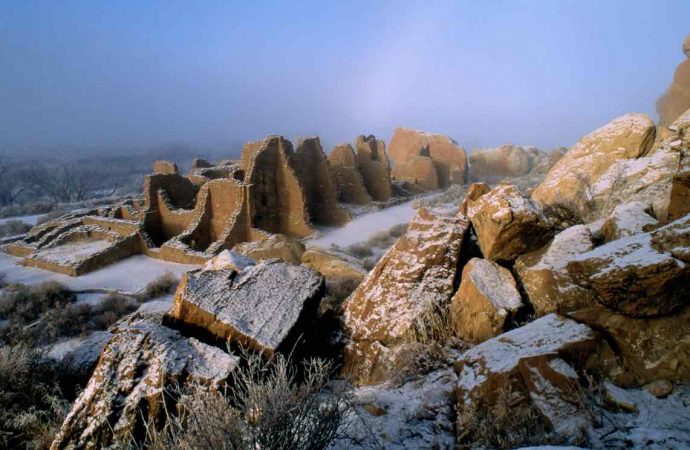Archaeologists and anthropologists don’t just study the dynamics of power and politics. They are actively mired in political systems – a position which they need to embrace
The 82nd annual meeting of the Society for American Archaeology (SAA) just took place last week in Vancouver, British Columbia. It was well attended, and with the political climate being what it is in the United States right now, many of the conversations I had centred around advocacy. Most of the professional archaeologists I know (I dare say all the professional archaeologists I know) are committed to fighting efforts that weaken protections for cultural resources. It is not cynical to say that as a discipline we are committed to the continuing protection for sites that are hundreds or thousands of years old, to ensure that such sites continue to exist for hundreds and thousands years more. There are dissonant voices, however, questioning just how political archaeologists should be, how deeply into the fray we should delve. As scientists should we not be above politics, focusing on our studies of the past?
To me, there is no question about our place in the fray. Politics is about the practice of achieving and asserting power. Archaeology and anthropology have long played an important role in both reinforcing and subverting the dominant mythologies upon which such power is built. In many ways modern American Archaeology- focused on the systematic recovery of data to answer research questions about past human behavior- was born out of challenges to nineteenth century justifications for eradicating American Indian populations. As Euro-Americans raced across the north American continent, they found great earthen mounds in the southeast and mid-west that were the remnants of ancient cities like Cahokia.
The politically expedient narrative was that the Native Americans who lived on and among these mounds could not possibly have built them – instead, it was argued that the Native Americans replaced, or even decimated, the original inhabitants. From there it was an easy logical leap that the US was justified in decimating and replacing the Indians themselves.
Easy stories rarely answer all questions, and the debates about who the moundbuilders were continued. It was laid to rest in the 1880s when the Smithsonian undertook extensive studies designed around a single question: Were the mound builders Indians? Rigorous excavations and careful scrutiny of the artefacts recovered allowed Cyrus Thomas, the Smithsonian ethnologist turned archaeologist, to argue for the skill, knowledge, and antiquity of Native Americans. It should come as no surprise that these questions – and answers – came at the end of the nineteenth century when the Indian wars on the great plains had run their course, and most Native American groups had been removed to reservations, the final step in the project of “Manifest Destiny”.
It is also at this time that the federal government began to examine the need to preserve archaeological sites. Goodman Point Pueblo, a large Ancestral Puebloan town in southwestern Colorado, was the first archaeological site protected by the federal government in 1889. Predating the establishment of the National Park Service, there was a growing recognition that the federal government actively preserving ancient remains was a public benefit. In 1906 President Theodore Roosevelt signed the Antiquities Act, which gave federal agencies the responsibility of managing their cultural resources. Much of the impetus for the Act was to stem the extensive looting and vandalism that was occurring in places like the American southwest. A long-term consequence was that public lands and archaeological research became intertwined, so that today the potential erosion of public lands is an immediate and existential threat to archaeological resources.
Historical archaeology, the study of the material culture of the modern world, emerged in earnest in the 1930s with excavations at iconic colonial sites such as Jamestown, Virgina.
The earliest historical archaeology was a patriotic effort to recover information on the earliest Europeans in the Americas. While mostly unconscious, the focus on the forts and settlements of white America reinforced romantic notions of pioneers and patriots. However, Archaeology has always been at its best when it asks questions about people who wouldn’t or couldn’t leave written documents about themselves. The development of fields of study such as plantation and African Diaspora archaeology provided venues to understand the daily experience of enslaved Africans and African-Americans. Rendered as nearly invisible victims, rigorous archaeological investigations since the 1980s have shown how enslaved people retained, adopted, and even created rich cultural identities that have amplified the deep complexity of modern American society. Other sub-fields of historical archaeology, focusing on Chinese laborers, Italian miners, or New England factory girls all challenge the history of how America has been built and maintained.
Today, the most significant archaeological work is inclusive, collaborative, and emancipatory. The sudden visibility of research done at WWII-era Japanese Internment Camps is emblematic of the relevance of archaeology to understanding the consequences of and resisting hateful nationalistic policies.
Archaeology and anthropology don’t just study dynamics of power and politics, the discipline is actively mired in political systems, which is why so many people feel embattled today. Funding sources, access to archaeological sites or human populations, even ways in which our findings and interpretations are disseminated are all ensconced in political systems. Our work has always been political. We couldn’t put our heads in the sand even if we wanted to.
Source: The Guardian

































Leave a Comment
You must be logged in to post a comment.